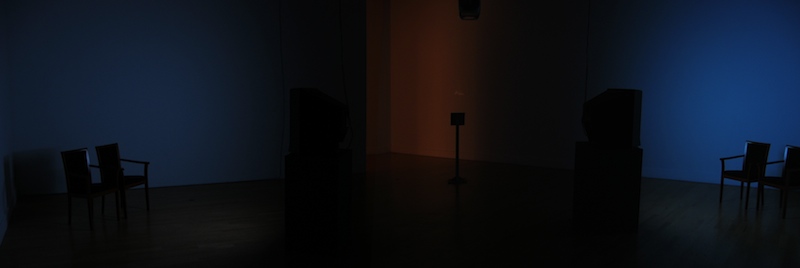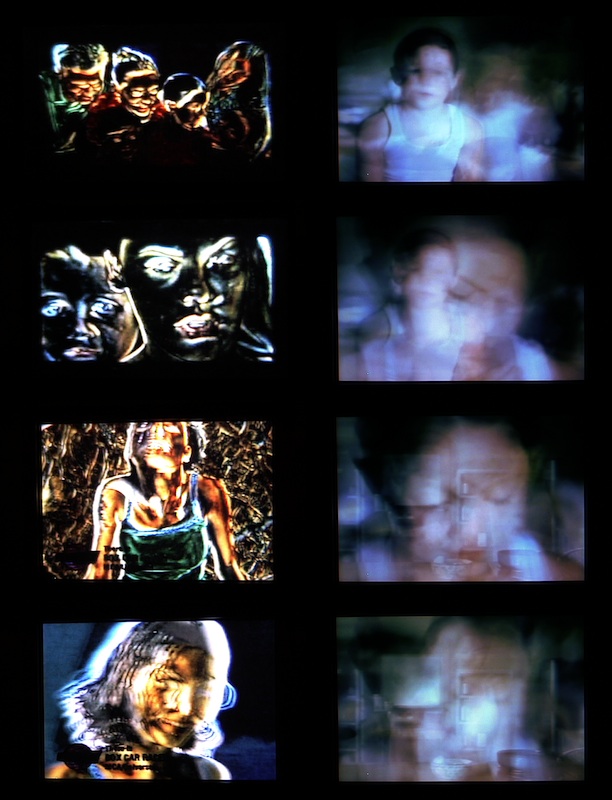

Installation shot, Art Gallery of Hamilton 2002.
In Shock Absorber I take a live feed from broadcast television and separate it into two parts in real time.
One part contains all the movements, edits and high frequency visual stimulation. Changes and movements are visible, but anything constant in the image is not seen.
The other part contains everything that is left over after the movements and changes are removed. In this case, a cut becomes a slow cross-fade. Moving objects blur into invisibility. Cuts are smoothed over, with multiple shots bleeding into each other. Newscasters' bodies are solid, but their faces (or at least their lips and eyes) are blur.

These are two different readings of the same moments in broadcast TV. Only motion is visible on the left.
All
motion is filtered out of the image on the right.
The two versions of the feed are shown on two televisions facing opposite direction in the gallery space.
The following is from the press release:
"The perceptual apparatus of the brain creates an elaborate fiction as it constructs the images we see. These processes originally evolved to enable us to survive rationally in a certain kind of visual environment (reality). The television industry has developed a visual language that triggers this perceptual system in new ways. The refinement of this visual language is conducted through the feedback loop of the ratings mechanism. Television has been adapting itself to the sensitivities of our perceptual system.This work is the most recent in a series of works in which I leave the "content" of the work open. This is not done through an attempt to resurrect the old form/content debate. These works are perceptual prostheses. They are works which you look through. I could compile an hour of optimally interesting TV source material for "Shock Absorber", but the work would then be more about my choices of TV content for the work and would shift the focus away from the experiential and perceptual realm where my greater interest lies.(next)Interactive sound and video installation artist David Rokeby has devised perceptual filters that permit a privileged view of the material the eye sees before it is processed and transformed by the brain. He filters live Television broadcasts into two separate readings, sending the agitated nervous visual activity to one monitor and feeding the remaining barely moving dream-like visual flow to the other.
Rokeby's fascination with visual perception systems originates with his widely acclaimed interactive installation called Very Nervous System, which analyzes live video images and transforms them into music. Very Nervous System generated internal images as part of its process of analyzing movement. It was not until 1995, after more than 10 years of work with this system, that Rokeby was able to make these internal images visible. Realizing that looking at these images was, in fact, looking through perceptual filters, Rokeby embarked on a series of installations that explore the manner in which perceptual prostheses transform our experience of familiar visual material, and deconstruct the hidden processes within seeing. The first in the series, Watch, transforms live surveillance camera footage of public space. Shock Absorber operates on the very different visual reality of television."
2002
Art Gallery of Hamilton, Hamilton, Canada.
Copyright 2001-3 David Rokeby / very nervous systems / All rights reserved. 1/13/03